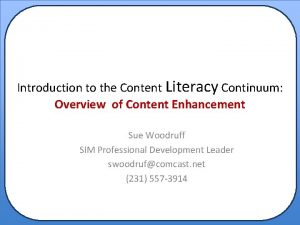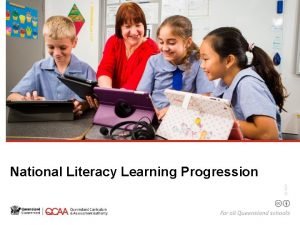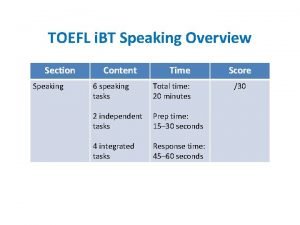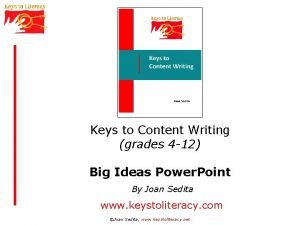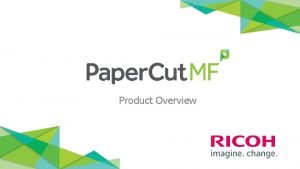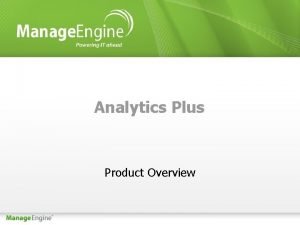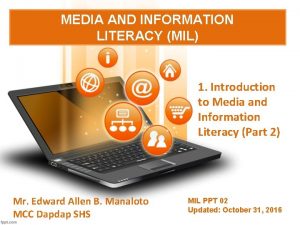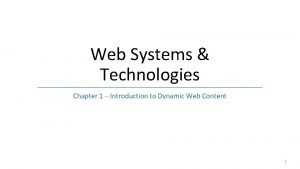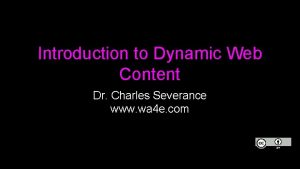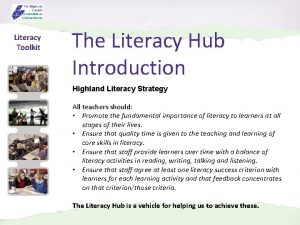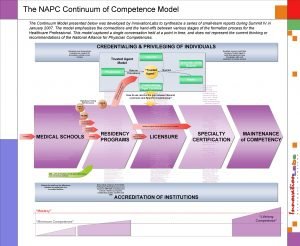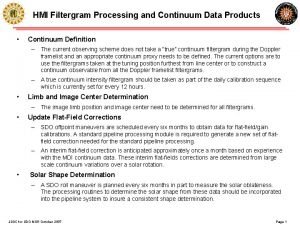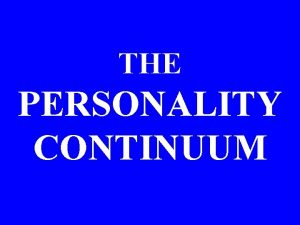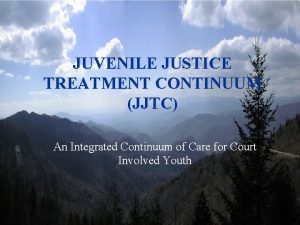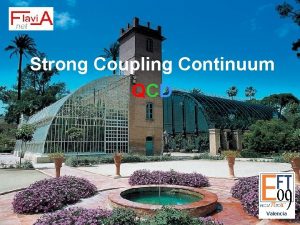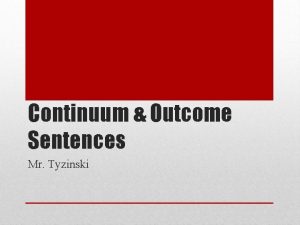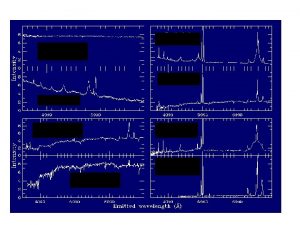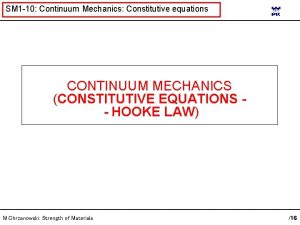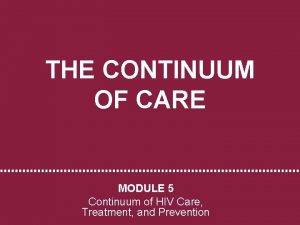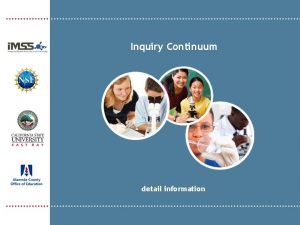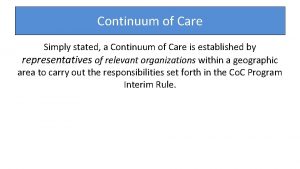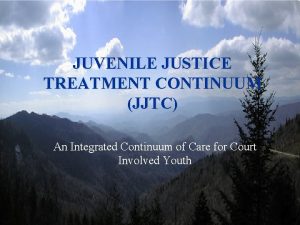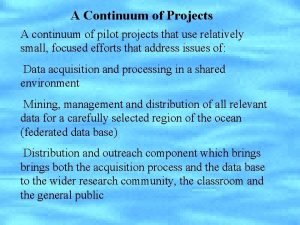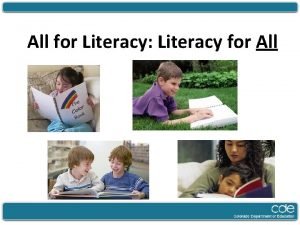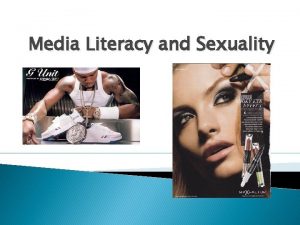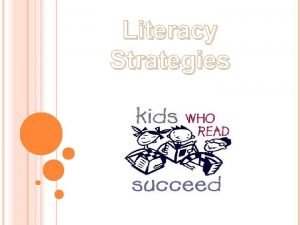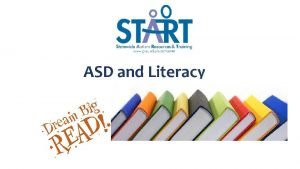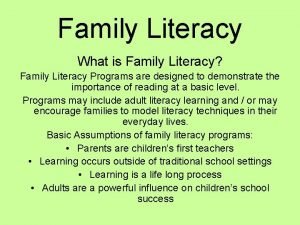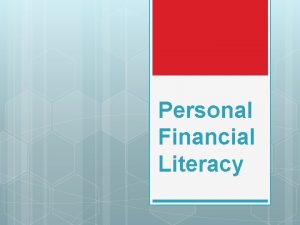Introduction to the Content Literacy Continuum Overview of
















































- Slides: 48

Introduction to the Content Literacy Continuum: Overview of Content Enhancement Sue Woodruff SIM Professional Development Leader swoodruf@comcast. net (231) 557 -3914

What is the challenge? • • • Ever increasing amount of content to teach Amount of time to teach is NOT increasing Diversity of students is increasing Increased accountability Planning time is largely administrative Required to change how we plan

Knowledge Critical Content

Thinking About the Curriculum. . . Knowledge Course

Knowledge Course Unit

Course All Students Most Students Some Students

Unit

Content: Facts, Concepts, Definitions, Propositions Unit ALL All Content Manipulation Generalization & Problem Solving Most Some SOME

SMARTER Planning around critical content is essential in order to deepen content knowledge! SMARTER Planning Selecting the critical questions. Mapping content structures. Analyzing learning difficulty based on: Quantity Complexity Interest Background Relevance Organization Abstractness Reaching enhancement decisions by selecting powerful. . . Teaching Devices Teaching strategically through explicit. . . Teaching Routines Evaluating enhancements Revaluate outcomes

Poll: How many words a year do 5 th graders. . .

Poll: How many words a year do 5 th graders. . .

Poll: How many words a year do 5 th graders. . .

Building Blocks for Content Literacy HIGHER ORDER SUBJECT MATTER STRATEGIES SKILLS LANGUAGE


What implications does this data have to you as a content teacher?

The CLC says… • There are unique (but very important) roles for each member of a secondary staff relative to literacy instruction – While every content teacher is not a reading teacher, every teacher instructs students in how to read content. – Literacy coaches may be necessary but aren’t sufficient • Some students require more intensive, systematic, explicit instruction of content, strategies, and skills

Additionally, the CLC …. . • Is a framework for guiding – Staff dialogue around literacy – Professional development – Resource allocation – Decision making • Integrates instructional programs – From silos to synergy

Content Literacy “Synergy” CONTENT CLASSES Level 1. Enhanced Content Instruction Level 2. Embedded Strategy Instruction Level 3. Intensive Strategy Instruction • strategy classes • strategic tutoring Improved Literacy Level 5. Therapeutic Intervention Foundational language competencies Level 4. Intensive Basic Skill Instruction

Learning Strategies Curriculum Content Enhancement Routines

The Strategic Instruction Model Also Helps Teachers Plan, Present, Explain

Content-area teachers are essential to a literacy improvement effort: They … – know the content – know the reading, writing, speaking and thinking demands of their content – have the access and the opportunity – collectively have power to make a difference Taking Action on Adolescent Literacy An Implementation Guide for School Leaders

Introduction to the Content Literacy Continuum (CLC) Framework is about by first considering a way to think about a school when analyzing and implementing a course of action in regards to high level thinking and literacy. then, by understanding the big picture strategies n embedded within content (gen ed) whe finally, by understanding routines wh en taught explicitly in a support setting

Content Literacy “Synergy” CONTENT CLASSES Level 1. Enhanced Content Instruction CONTENT CLASSES Level 2. Embedded Strategy Instruction Level 3. Intensive Strategy Instruction • strategy classes • strategic tutoring Improved Literacy Level 5. Therapeutic Intervention Foundational language competencies Level 4. Intensive Basic Skill Instruction

SMARTER Planning S M A R T E R Selecting the critical questions. Mapping content structures. Analyzing learning difficulty based on: Quantity Complexity Interest Relevance Background Organization Abstractness Reaching enhancement decisions by selecting powerful. . . Teaching Devices Teaching strategically through explicit. . . Teaching Routines Evaluating enhancements Revaluate outcomes

Content Enhancement Routines Planning and Leading Learning Course Organizer Unit Organizer Lesson Organizer Explaining Text, Topics, and Details Framing Routine Survey Routine Clarifying Routine LINCS Vocabulary Routine Teaching Concepts Concept Mastery Routine Concept Anchoring Routine Concept Comparison Routine Increasing Performance Quality Assignment Routine Question Exploration Routine Recall Enhancement Routine ORDER Routine

Content Enhancement Routines Planning and Leading Learning Course Organizer Unit Organizer Lesson Organizer Explaining Text, Topics, and Details Framing Routine Survey Routine Clarifying Routine LINCS Vocabulary Routine Teaching Concepts Concept Mastery Routine Concept Anchoring Routine Concept Comparison Routine Increasing Performance Quality Assignment Routine Question Exploration Routine Recall Enhancement Routine ORDER Routine

All Content Enhancement Routines MUST: • Be able to be infused into any content. • Apply to HALO (High, Average, Low, Other) achievers. • Be easy to teach and evaluate. • Make a positive difference.

• Critical features of the content are selected and transformed in a manner that promotes student learning. • Instruction is carried out in partnership with students. • Both group and individual needs are valued and met. • The integrity of the content is maintained.



How well does Content Enhancement work? • In each study, students gained an average of at least 10 to 20 percentage points on tests or tasks that required students to demonstrate learning. • In general, the greatest gains were seen in classes where teachers had the highest expectations for student learning and were consistent in their use of the routine over time.

An example …

The Unit Organizer Routine Used to plan units and then introduce and maintain the big ideas in units and show units, critical information and concepts are related.

Expressions Solving Equations Problem Solving





The Unit Organizer 2 8 LAST UNIT SCHEDULE 4 /Experience 1 5 BIGGER PICTURE CURRENT UNIT CURRENT NAME DATE 3 NEXT UNIT /Experience UNIT MAP 7 UNIT RELATIONSHIPS UNIT SELF-TEST QUESTIONS 6

KNOWLEDGE STRUCTURE ORGANIZATION The Unit Organizer 4 GUIDING QUESTIONS Elida Cordora NAME DATE BIGGER PICTURE 1/22 The roots and consequences of civil unrest. 2 LAST UNIT /Experience Growth of the Nation 8 UNIT SCHEDULE 1/22 Cooperative groups over pp. 201 -210 1/28 Quiz 1/29 Cooperative groups over pp. 210 -225 "Influential Personalities" projectdue 1/30 Quiz Cooperative groups over pp. 228 -234 2/6 Review for test 2/7 Review for test 2/6 Test 7 CURRENT UNIT The Causes of the Civil War 3 NEXT UNIT /Experience The Civil War is ab out. UNIT MAP . . was based on Sectionalism was influenced by pp. 201 -236 Areas of the U. S. emerged because ofbecame greater with Differences between the areas Events in the U. S. What was sectionalism as it existed in the U. S. of 1860? How did the differences in the sections of the U. S. in 1860 contribute to the start of the Civil War? What examples of sectionalism exist in the world today? Leaders across the U. S. descriptive 6 UNIT RELATIONSHIPS UNIT SELF-TEST QUESTIONS 2/2 5 1 compare/contrast cause/effect

Key Words À Á Ã CONCEPT DIAGRAM À CONVEY CONCEPT OFFER OVERALL CONCEPT NOTE KEY WORDS CLASSIFY CHARACTERISTICS Always Present Ä Å Æ Á EXPLORE EXAMPLES PRACTICE WITH NEW EXAMPLE TIE DOWN A DEFINITION Examples: Sometimes Present Never Present Nonexamples:

Hierarchical PRIOR KNOWLEDGE Key Words U. S. Civil War CATEGORIZATION À Á Ã CONVEY CONCEPT Civil War OFFER OVERALL CONCEPT DISCRIMINATING EVALUATION CONCEPT DIAGRAM À armed conflict NOTE KEY WORDS Á CLASSIFY CHARACTERISTICS Always Present Northern Ireland • Groups of citizens About distribution of power • Within a single nation one nation ANALYSIS of characteristics Sometimes Present economic religious ethnic social Never Present War between nations political ethnic many nations Ä social rights EXPLORE EXAMPLES Examples: Northern Ireland Desert Storm in Kuwait 1990’s crisis in the Balkans Å Æ Nonexamples: United States war between the States World War I American Revolutionary War World War II “Desert Storm” in Kuwait PRACTICE WITH NEW EXAMPLE TIE DOWN A DEFINITION A civil war is a type of armed conflict among groups of citizens of a single nation that is caused by concerns about the distribution of power.

Comparison Table 2 1 3 Concept 3 Characteristics Unlike Characteristics Concept 1 4 6 Overall Concept Characteristics Like Characteristics 6 Unlike Characteristics 8 Summary C O M P A R I N G Communicate Targeted Concepts Obtain the Overall Concepts Make lists of Known Characteristics Pin down Like Characteristics Assemble Like Categories Record Unlike Characteristics Identify Unlike Categories Nail Down a Summary Go Beyond the Basics 9 Extensions 5 Like Categories 7 Unlike Categories

Strategic thinking prompts FACTS Comparison Table 2 Overall Concept Economic Causes of Sectionalism in the U. S. in 1860 1 Concept 1 Economic conditions in the North 3 Economic conditions in the South 3 Characteristics Good ports Good natural resources Immigrants in labor force Profit from industries Good land transportation Good credit with other countries 4 Characteristics Good ports Good natural resources Slaves in labor force Profit from growing cotton Poor land transportation Good credit with other countries Like Characteristics Unlike Characteristics Immigrants in labor force Profit from industries Good land transportation 6 C O M P A R I N G Communicate Targeted Concepts Obtain the Overall Concepts Make lists of Known Characteristics Pin down Like Characteristics Assemble Like Categories Record Unlike Characteristics Identify Unlike Categories Nail Down a Summary Go Beyond the Basics 9 Unlike Characteristics Slaves in labor force Profit from growing cotton Poor land transportation 8 Extensions Study the economic conditions of the West in 1860, and create a list of characteristics to be compared to the North & South. 5 Good ports Good natural resources Good credit with other countries 6 CATEGORIZATION Like Categories Quality of ports Quality of natural resources Quality of credit 7 Unlike Categories Primary source of labor Source of profits Quality of land transportation Summary Economic conditions in the North and South in 1860 were alike because both had good natural resources, ports, and credit. Their primary sources of labor and profits were different, as was the quality of their land transportation.

The Framing Routine Used to transform abstract main ideas and key topics into a concrete representation that helps students think and talk about the key topic and essential related information.

The FRAME Routine Key Topic is about… Main idea Essential details So What? (What’s important to understand about this? ) Essential details

The Vocabulary LINCing Routine Designed to facilitate student use of two powerful tools, an auditory memory device and a visual memory device that will help them learn and remember the meaning of complex terms.

Where we are going today… Introduction to the Content Literacy Continuum (CLC) Framework is about by firstreturning considering then to a way to think about a school when analyzing and implementing a course of action in regards to high level thinking and literacy. then, by understanding the big picture strategies n embedded within content (gen ed) whe finally, by understanding routines wh en taught explicitly in a support setting
 Content literacy continuum
Content literacy continuum Literacy continuum k-6
Literacy continuum k-6 Numeracy progressions version 3
Numeracy progressions version 3 Content database software
Content database software Toefl speaking part 1
Toefl speaking part 1 Media literacy vs information literacy comparison
Media literacy vs information literacy comparison Venn diagram of media information and digital literacy
Venn diagram of media information and digital literacy There are 3 types of people media
There are 3 types of people media Cyber literacy and digital literacy
Cyber literacy and digital literacy Keys to literacy keys to content writing
Keys to literacy keys to content writing Characteristics of esp
Characteristics of esp Dynamic content vs static content
Dynamic content vs static content Multicullar
Multicullar Papercut job tickerting print management
Papercut job tickerting print management Introduction product overview
Introduction product overview Introduction product overview
Introduction product overview Introduction product overview
Introduction product overview Cartoon analysis about media
Cartoon analysis about media Introduction to dynamic web content
Introduction to dynamic web content Introduction to dynamic web content
Introduction to dynamic web content Content in introduction
Content in introduction Hát kết hợp bộ gõ cơ thể
Hát kết hợp bộ gõ cơ thể Lp html
Lp html Bổ thể
Bổ thể Tỉ lệ cơ thể trẻ em
Tỉ lệ cơ thể trẻ em Chó sói
Chó sói Tư thế worm breton là gì
Tư thế worm breton là gì Chúa yêu trần thế
Chúa yêu trần thế Môn thể thao bắt đầu bằng chữ f
Môn thể thao bắt đầu bằng chữ f Thế nào là hệ số cao nhất
Thế nào là hệ số cao nhất Các châu lục và đại dương trên thế giới
Các châu lục và đại dương trên thế giới Công thức tính thế năng
Công thức tính thế năng Trời xanh đây là của chúng ta thể thơ
Trời xanh đây là của chúng ta thể thơ Mật thư tọa độ 5x5
Mật thư tọa độ 5x5 Phép trừ bù
Phép trừ bù độ dài liên kết
độ dài liên kết Các châu lục và đại dương trên thế giới
Các châu lục và đại dương trên thế giới Thơ thất ngôn tứ tuyệt đường luật
Thơ thất ngôn tứ tuyệt đường luật Quá trình desamine hóa có thể tạo ra
Quá trình desamine hóa có thể tạo ra Một số thể thơ truyền thống
Một số thể thơ truyền thống Bàn tay mà dây bẩn
Bàn tay mà dây bẩn Vẽ hình chiếu vuông góc của vật thể sau
Vẽ hình chiếu vuông góc của vật thể sau Thế nào là sự mỏi cơ
Thế nào là sự mỏi cơ đặc điểm cơ thể của người tối cổ
đặc điểm cơ thể của người tối cổ Thế nào là giọng cùng tên
Thế nào là giọng cùng tên Vẽ hình chiếu đứng bằng cạnh của vật thể
Vẽ hình chiếu đứng bằng cạnh của vật thể Tia chieu sa te
Tia chieu sa te Thẻ vin
Thẻ vin đại từ thay thế
đại từ thay thế
